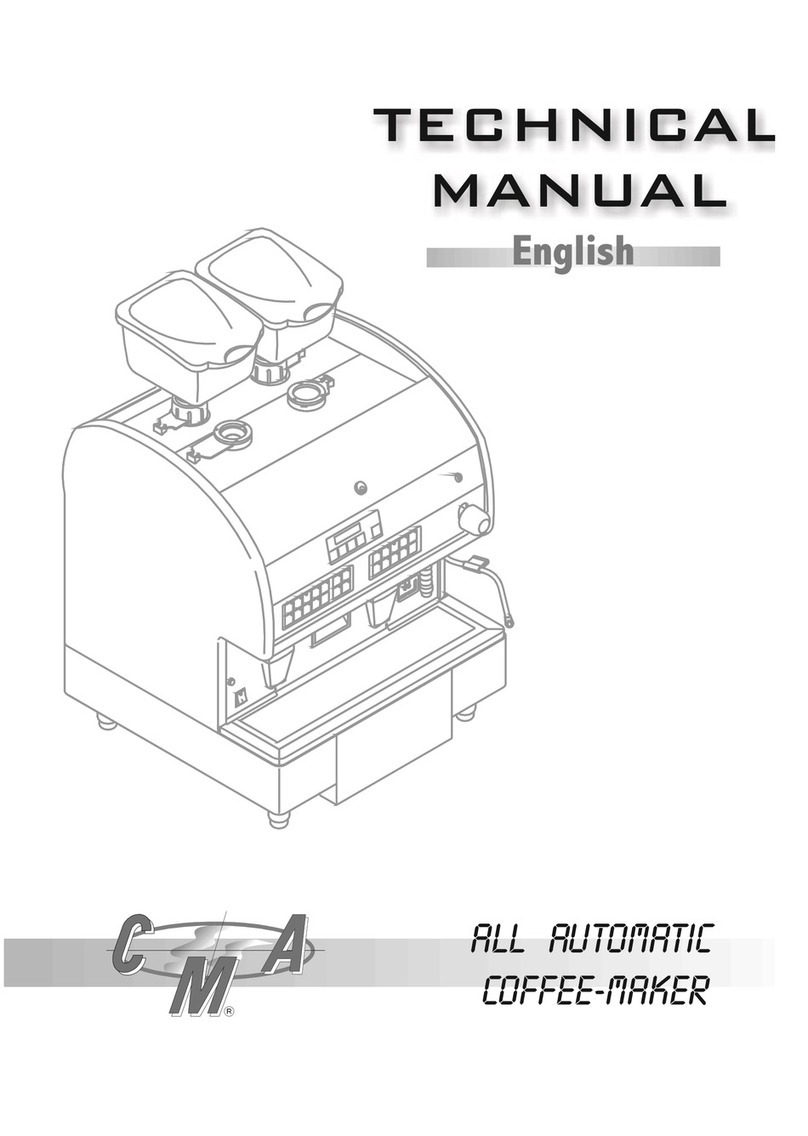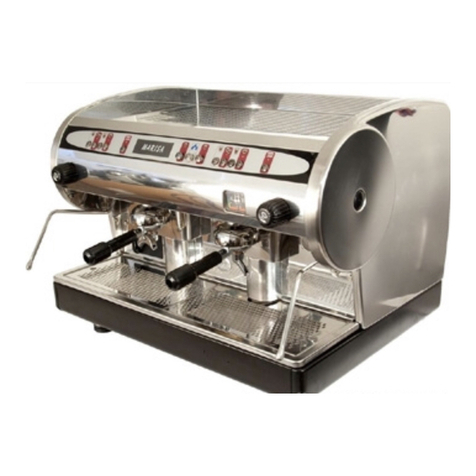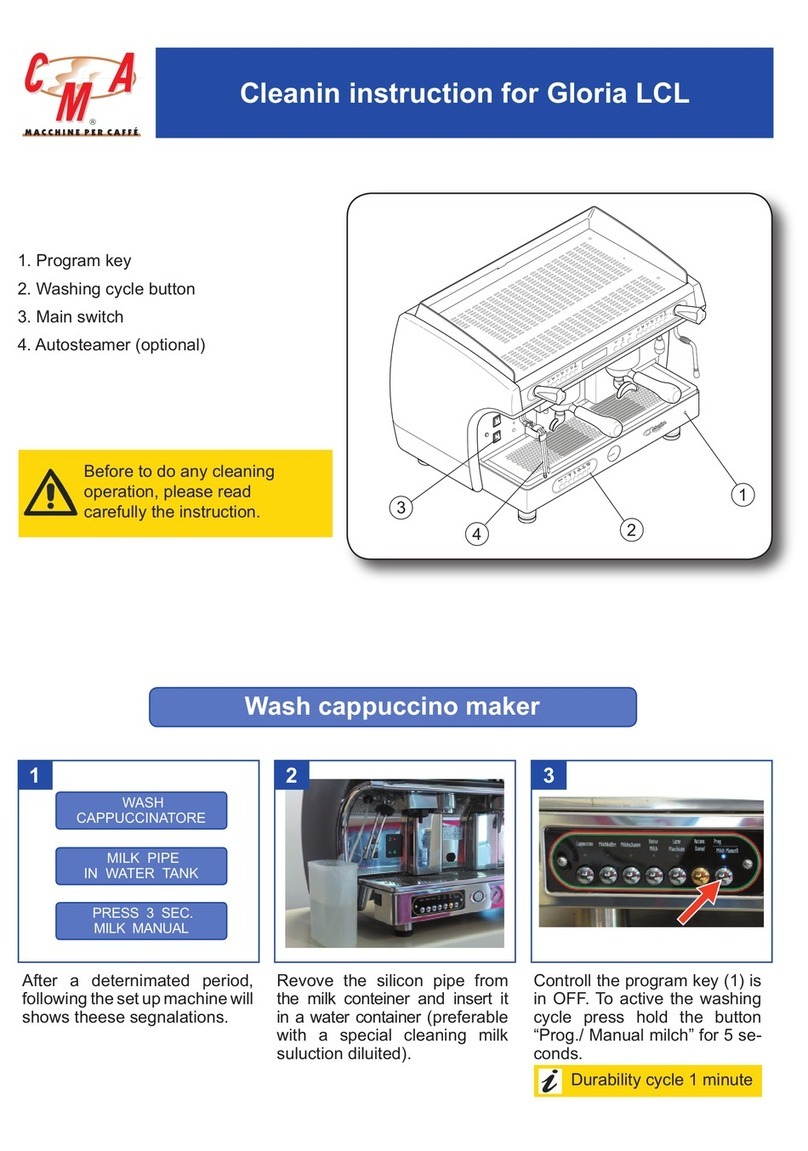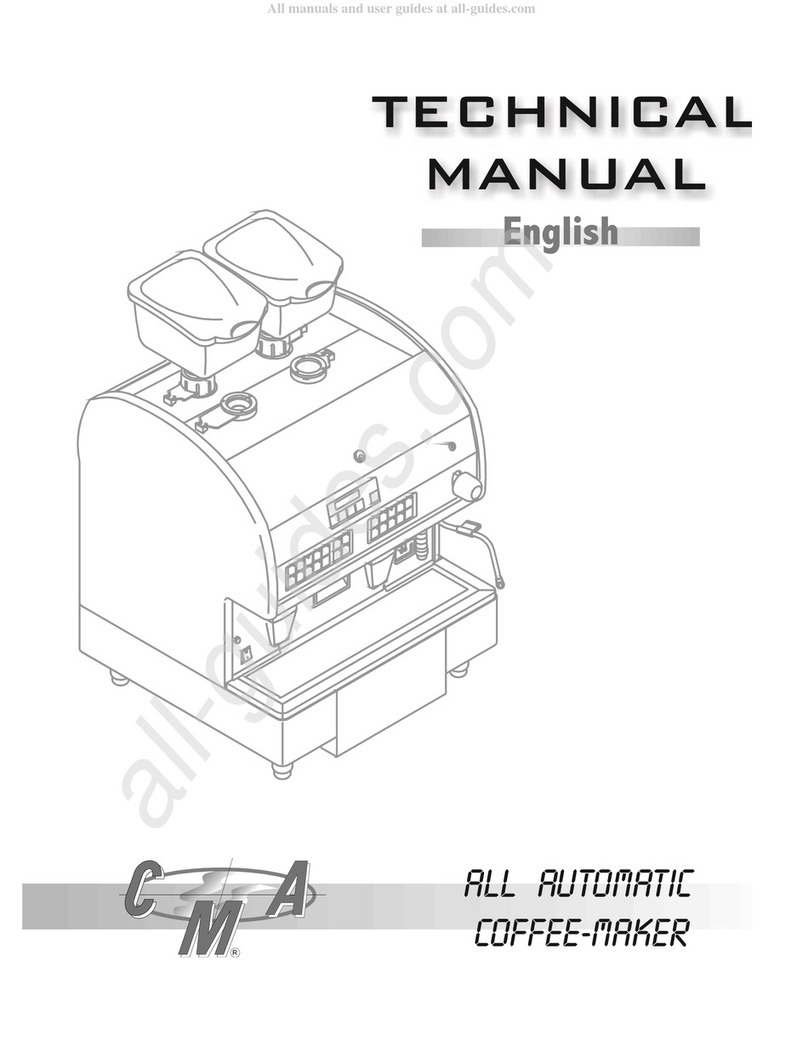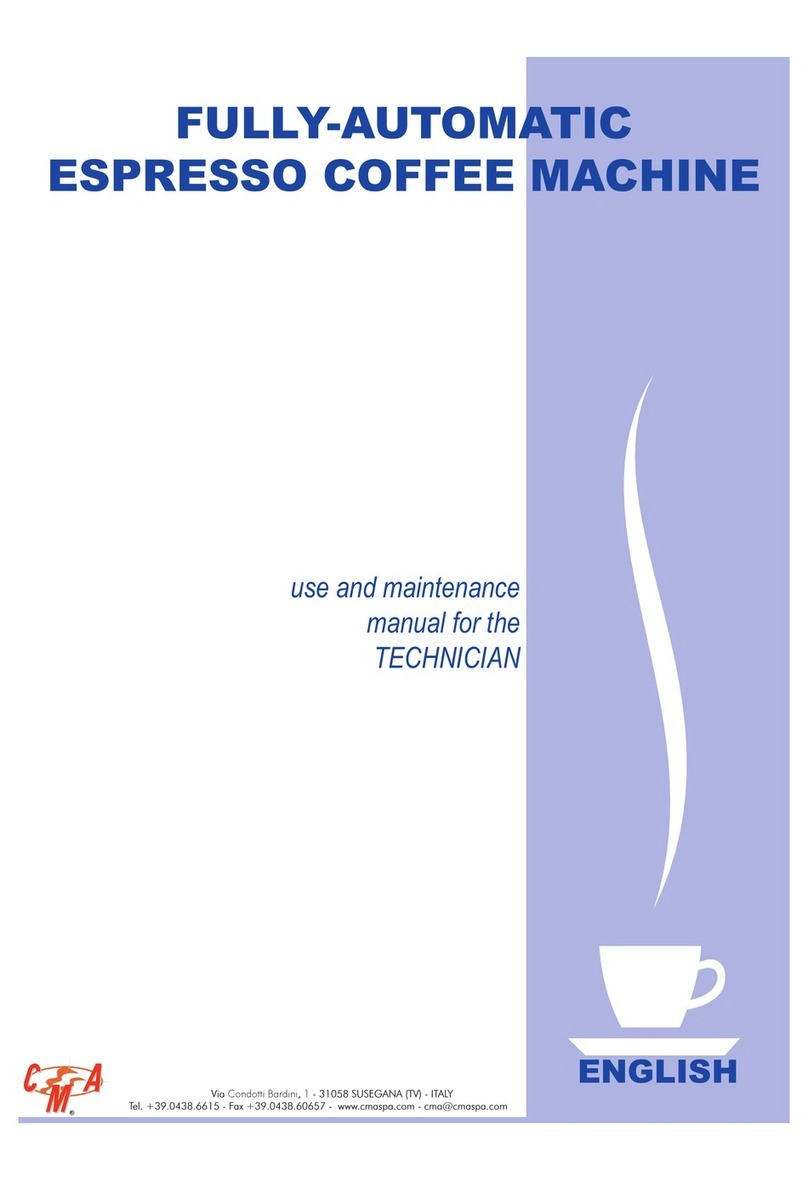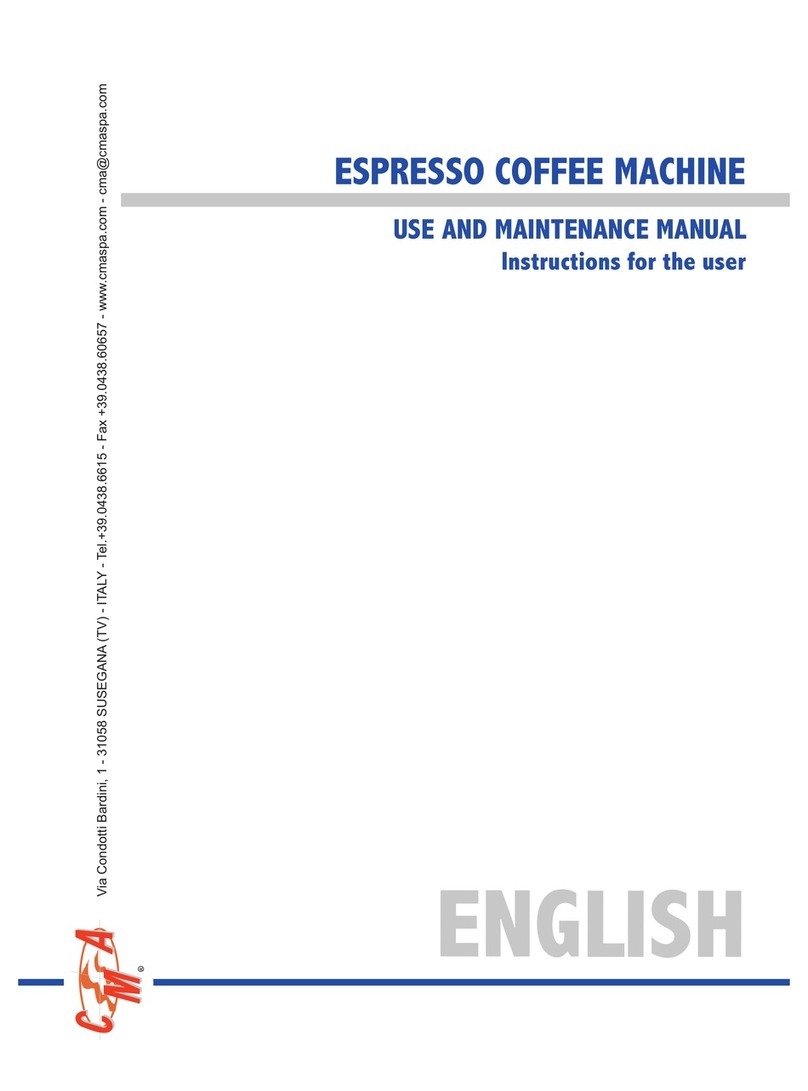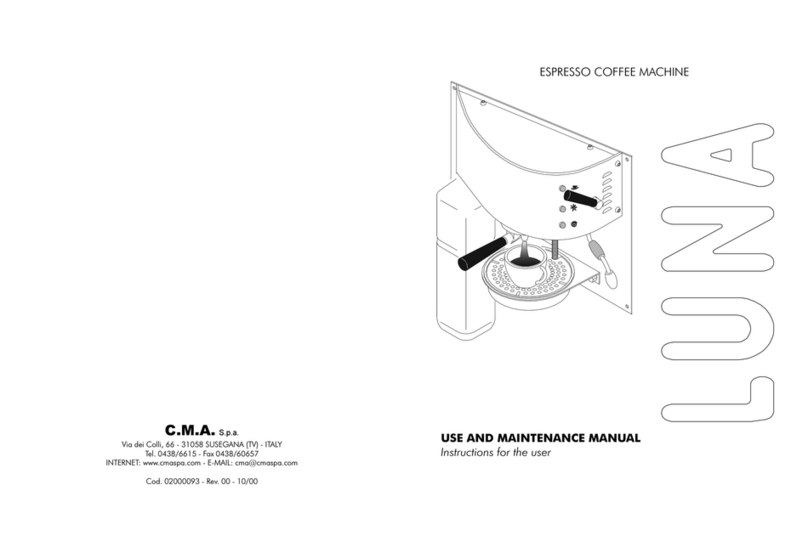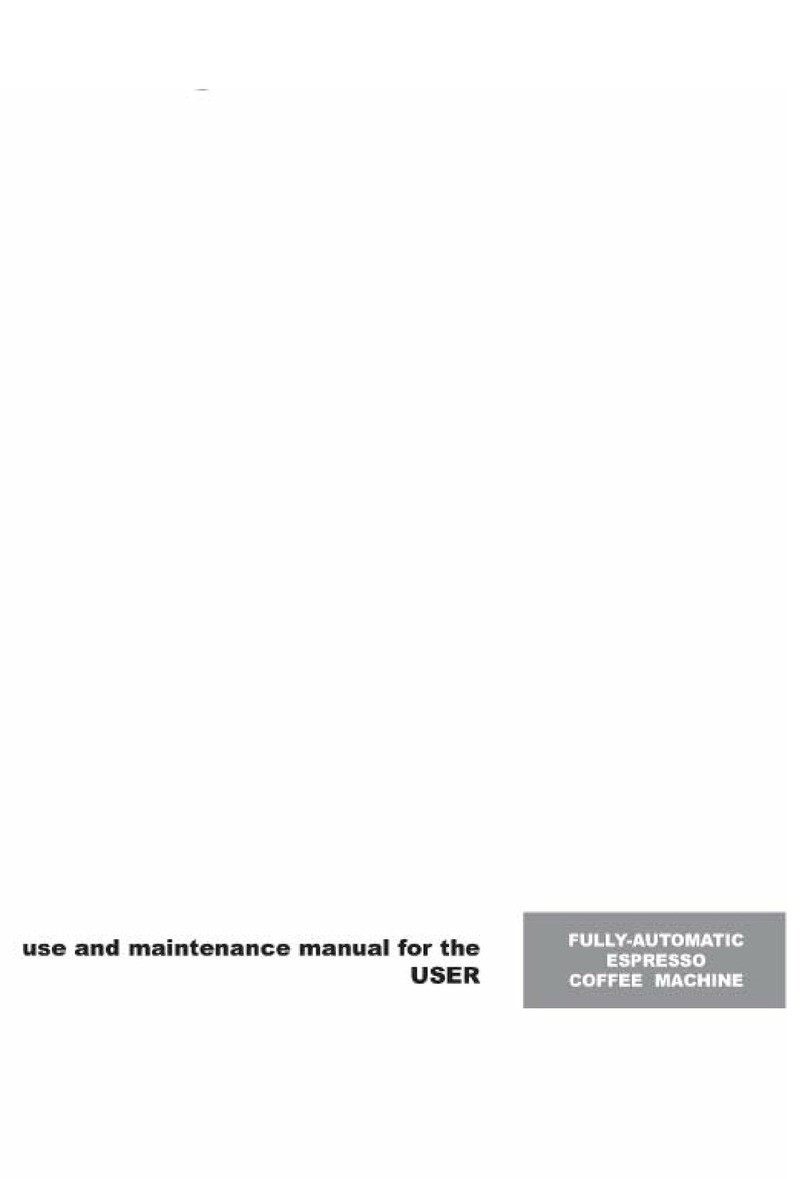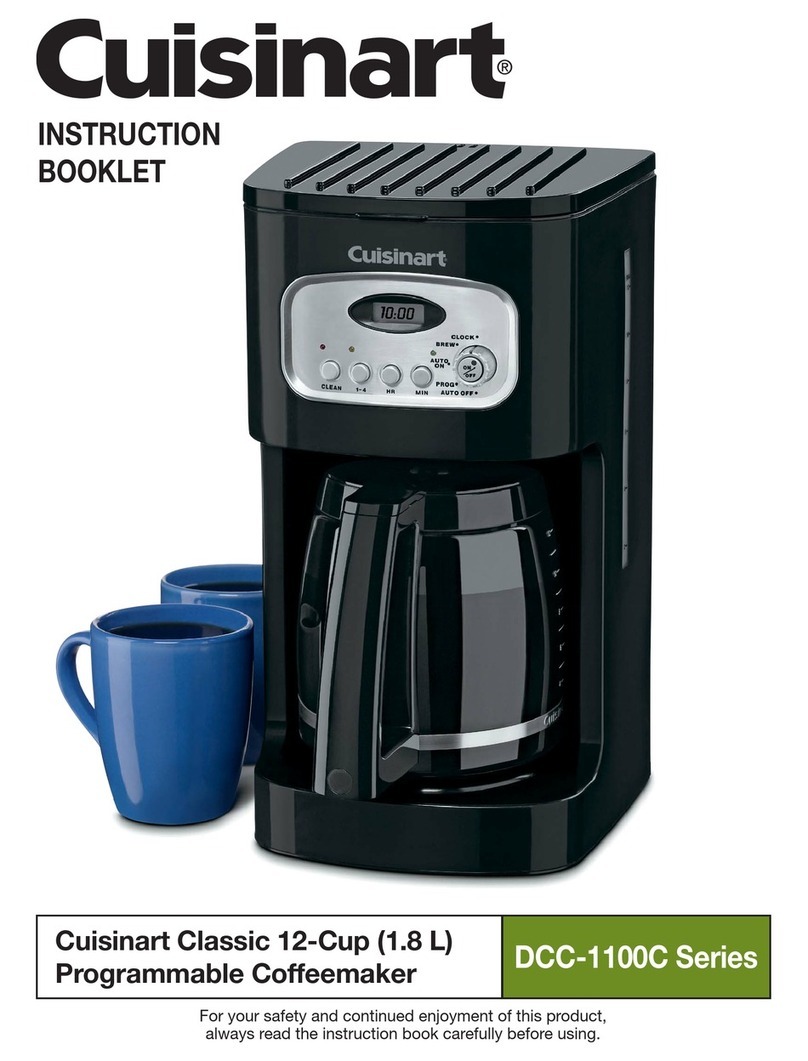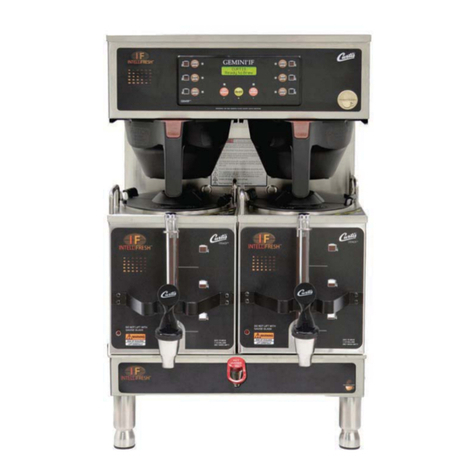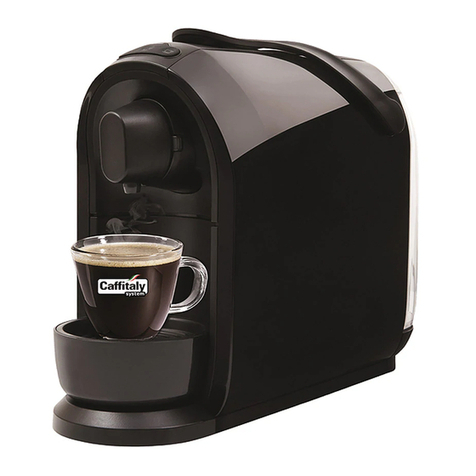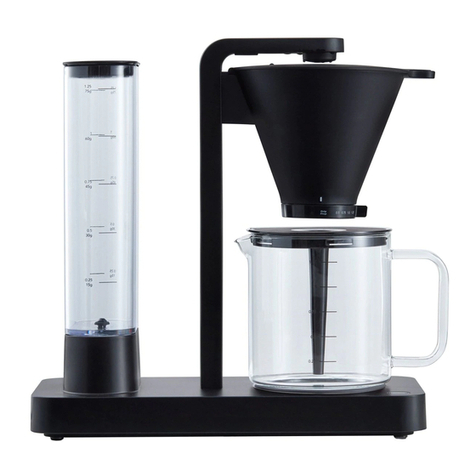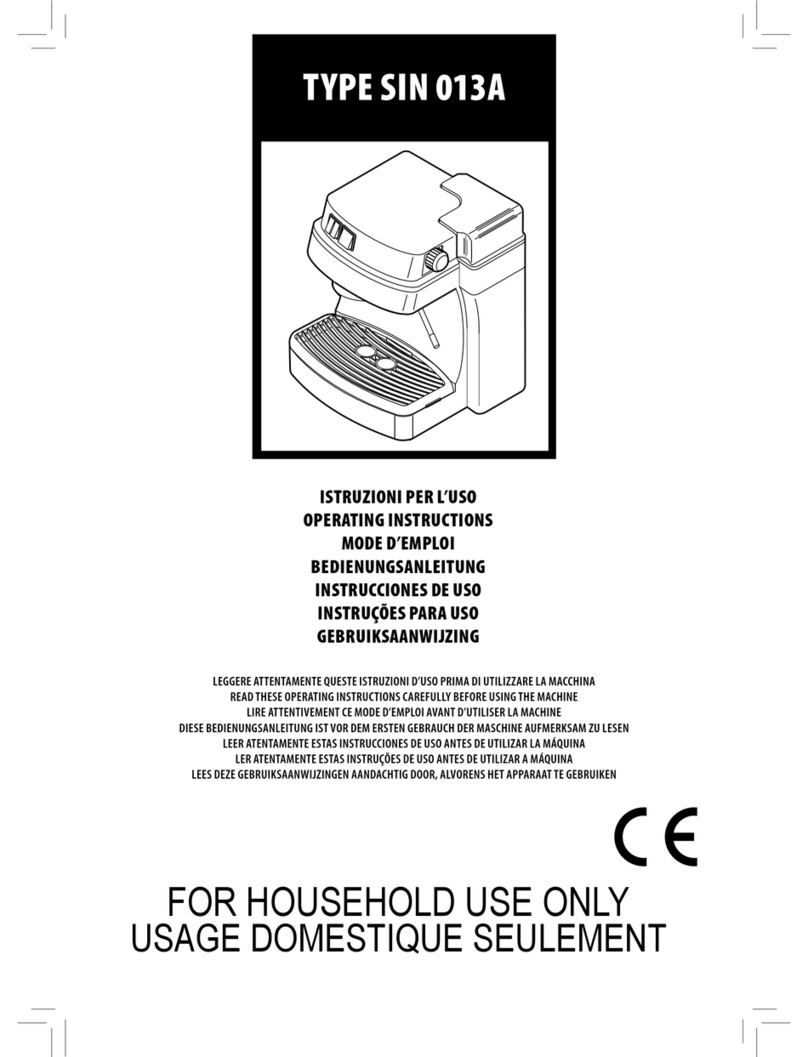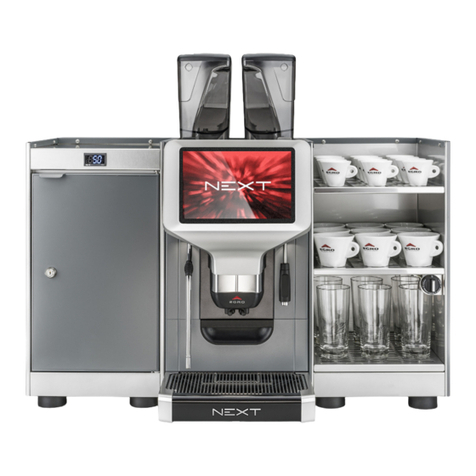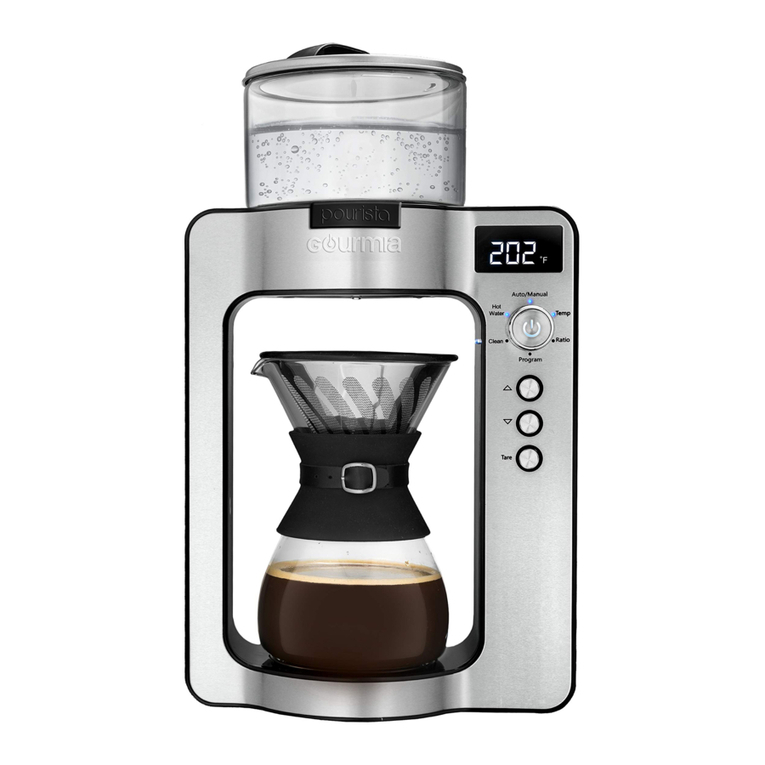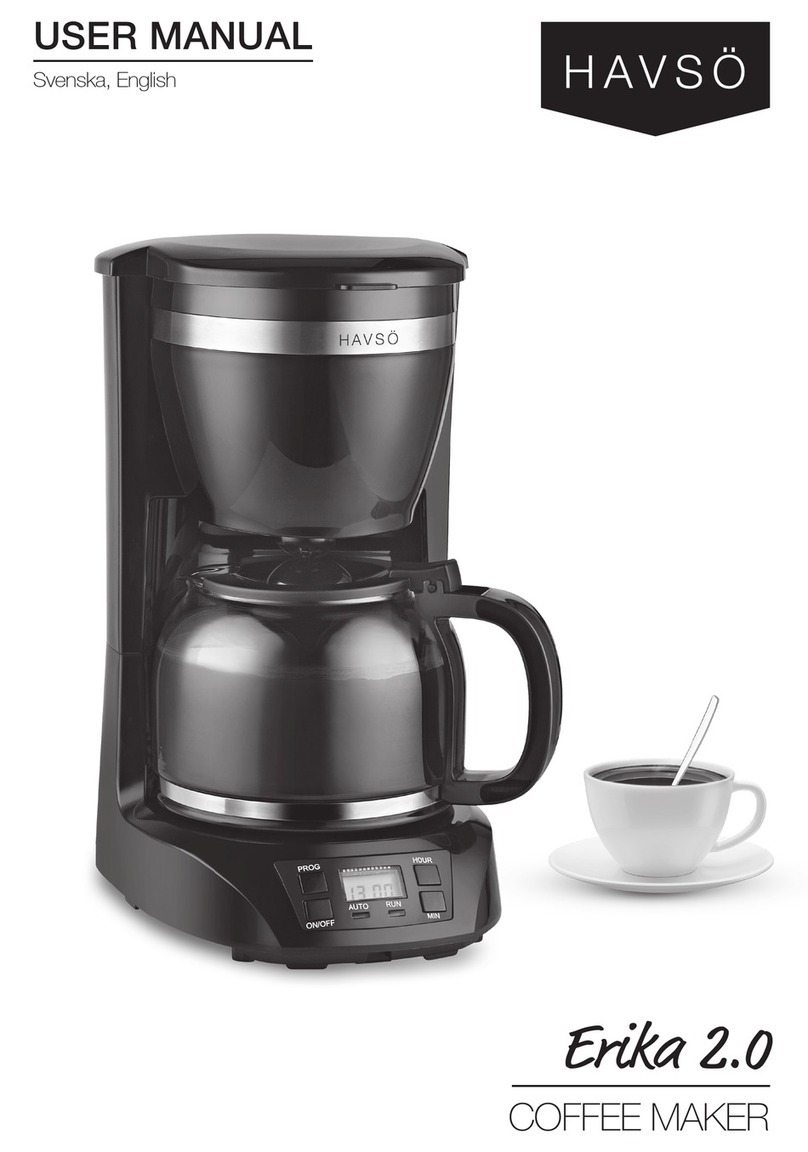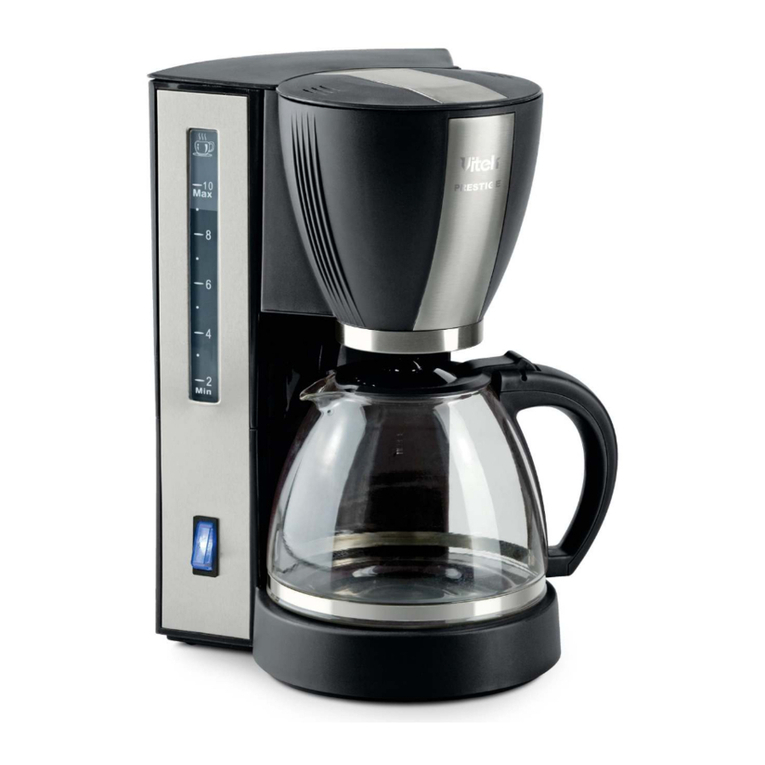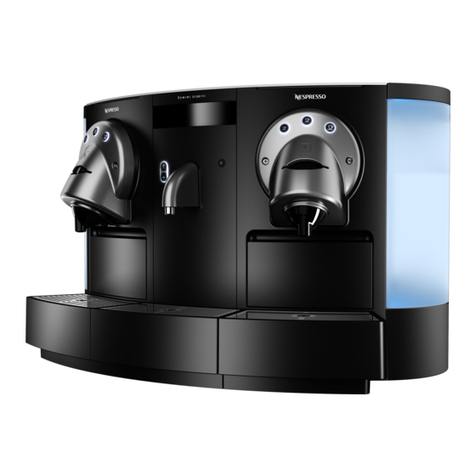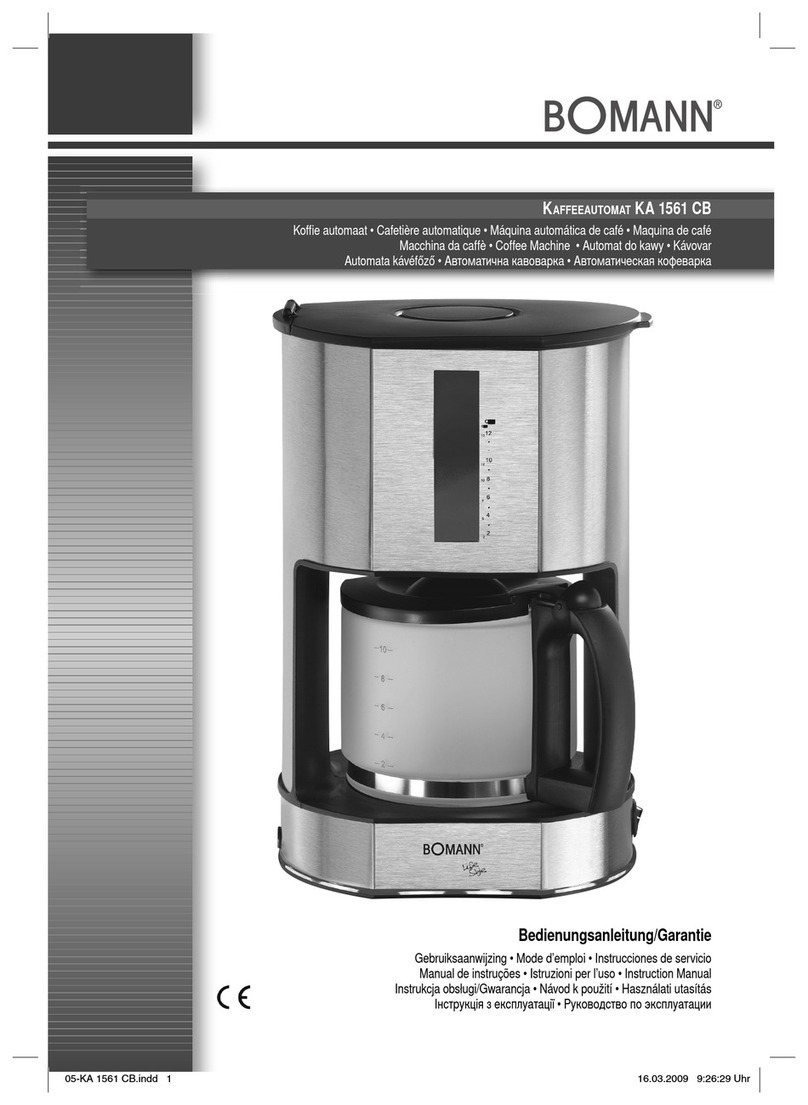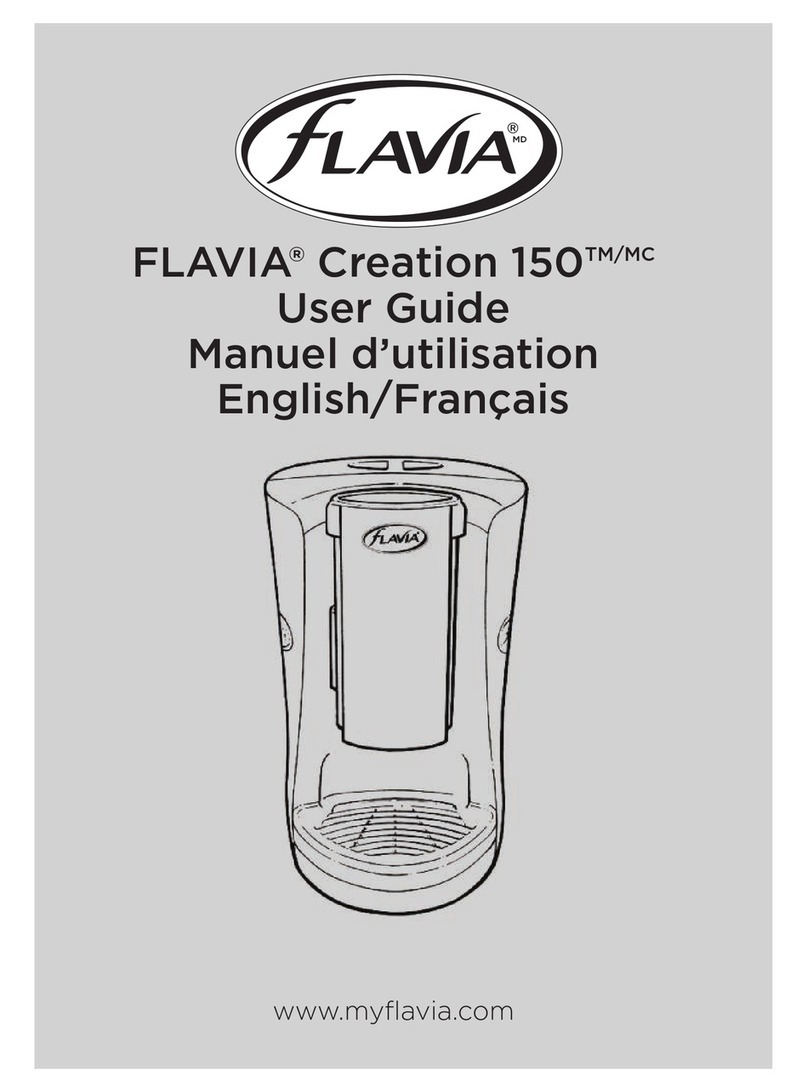ee machine - technician instructions
GAS Table Indications for the installation of the appropriate injector and the adjustment of the air aspiration cap .
ATTENTION
Do not under any circumstances attempt to light the gas without first installing the proper injector.
Do not operate the gas burners when the boiler is empty.
NOTE (FOR ITALY)
The system and installation of the devices must be performed in conformance with the current standards UNI-CIG 8723
of the Decreto Ministeriale dated the 12 April 1996.
ATTENTION (FOR GERMANY)
The following requisites must be observed for installation:
• Regulation in terms of work area and the fire department
• Rules in terms of the work place
• Technical rules for suction in terms of fireproofing
• Work sheet DVGW G634 “technical rules for kitchens -gas devices”
• Work sheet DVGW G600 “technical rules for gas installations”
• Technical rules (TRF) for installation with liquid gas
• Rules in terms of accident prevention
• Rules of the Organization that distributes the gas
Gas type
Pressure
of
connection
Min
Pressure
input
injector
Hole for
injector
of the burner
Adjustment
of suction
cap
of the air
Minimum
power
Q min
Maximum
Power
Q n
Maximum
consumption
Model mbar mbar 1/100 mm mm kW kW m3/h kg/h
1 Group
G20 20 1,7 100 1 0,47 1,67 0,177 -
G25 20 1,7 110 1 0,47 1,67 0,177 -
G25 25 2,4 100 1 0,47 1,55 0,164 -
G30/G31 28-30/37 3,5 60 3 0,47 1,40 - 0,110
G30/G31 50 3,5 60 3 0,47 1,80 - 0,142
2 Groups
G20 20 1,9 110 1 0,69 2,03 0,215 -
G25 20 2,1 135 1 0,69 2,52 0,267 -
G25 25 2,7 110 1 0,69 1,88 0,199 -
G30/G31 28-30/37 5,5 75 3 0,69 2,20 - 0,174
G30/G31 50 6,1 65 3 0,69 2,10 - 0,167
3 Groups
G20 20 2,3 135 1 1,16 3,06 0,323 -
G25 20 2,3 145 1 1,16 2,91 0,308 -
G25 25 3,5 135 1 1,16 2,85 0,302 -
G30/G31 28-30/37 6,1 80 3 1,16 2,51 - 0,199
G30/G31 50 11,3 75 3 1,16 2,84 - 0,225
4 Groups
G20 20 2,5 145 1 1,30 3,55 0,376 -
G25 20 2,5 160 1 1,30 3,55 0,376 -
G25 25 3,8 145 1 1,30 3,30 0,349 -
G30/G31 28-30/37 6,8 85 3 1,30 2,85 - 0,225
G30/G31 50 11,3 75 3 1,30 2,85 - 0,225
ATTENTION
When operating on gas, the machine emits combustion fumes directly into the surroundings where it is being used;
therefore, gas-powered machines must not be installed in rooms with a volume of less than 12 m3, as described by the
standards in use;
In closed rooms, always provide ventilation openings to release any possible gas leaks.




















